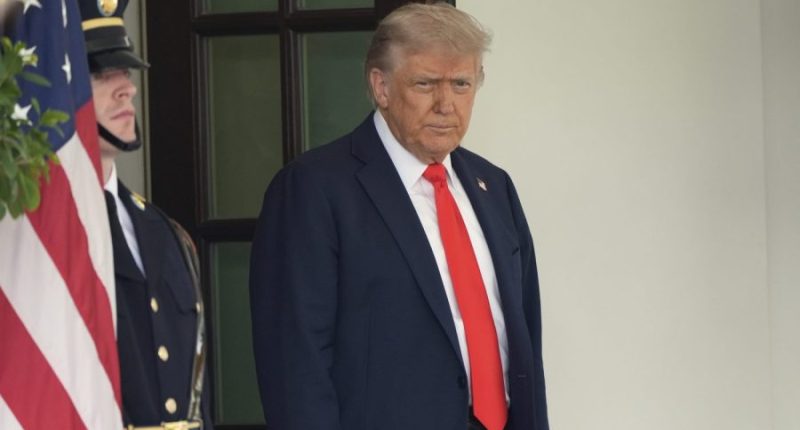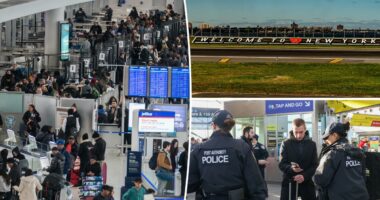Share this @internewscast.com

President Trump’s travel ban, which targets a dozen countries, went into effect on Monday, marking the White House’s latest effort to limit the number of people entering the U.S.
This policy fully prohibits nationals from Afghanistan, Chad, the Republic of the Congo, Equatorial Guinea, Eritrea, Haiti, Iran, Libya, Myanmar, Somalia, Sudan, and Yemen from entering the United States.
It also partially restricts entry into the U.S. for nationals coming from Burundi, Cuba, Laos, Sierra Leone, Togo, Turkmenistan and Venezuela.
However, the ban allows exceptions for lawful permanent residents, existing visa holders from all 19 countries, and individuals whose entry is deemed to serve U.S. national interests.
The travel ban is taking effect amid rising tensions in Los Angeles around immigration raids in the city.
Trump and White House officials have argued the travel restrictions are based on national security concerns, specifically with vetting procedures involving the listed countries.
Trump’s attempts to restrict entry into the United States from certain Muslim-majority countries in his first term drew legal challenges and protests at airports across the country.
This time around, experts have suggested he is likely on firmer legal footing in part because of a Supreme Court ruling that upheld the third version of his first-term ban and in part because the administration laid the groundwork with an executive order focused on enhanced vetting.

















